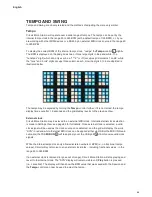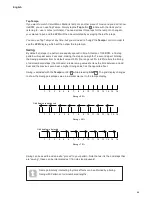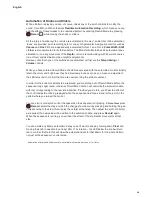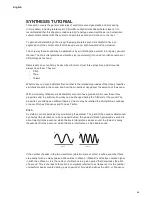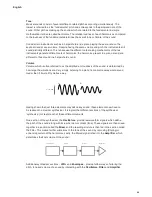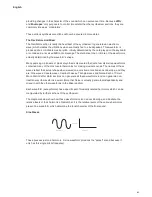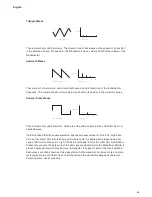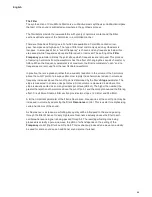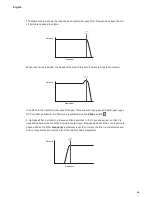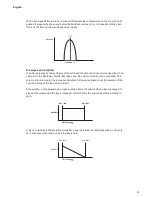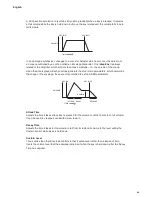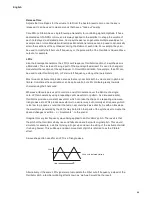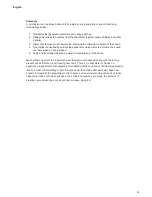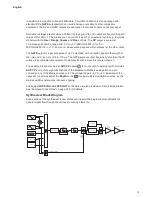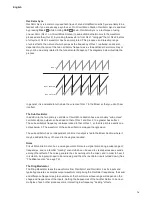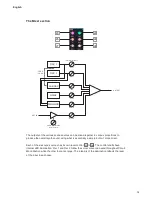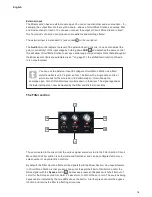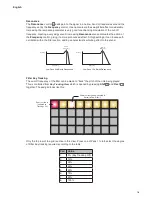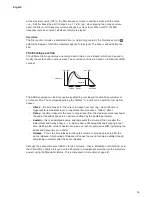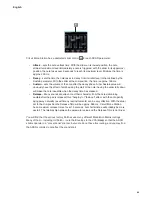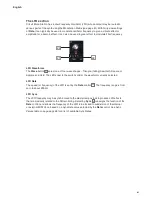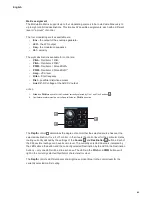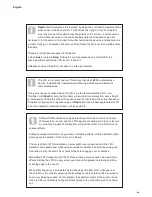
69
English
Release Time
Adjusts the time it takes for the volume to fall from the Sustain level to zero once the key is
released. It can be used to create sounds that have a “fade-out” quality.
Circuit Mono Station has a single Envelope Generator for controlling signal amplitude. It has a
dedicated set of ADSR controls, and is always applied to the amplifier to shape the volume of
each note played, as detailed above. Some synthesisers can generate multiple envelopes, for
example one or more Modulation Envelopes. Modulation envelopes can be used to dynamically
alter other sections of the synthesiser during the lifetime of each note. For example, they can
be used to modify the filter cut-off frequency, or the pulse width of the Oscillators’ Square Wave
outputs, for example.
LFOs
Like the Envelope Generators, the LFO (Low Frequency Oscillator) section of a synthesiser is
a Modulator. Thus instead of being a part of the sound synthesis itself, it is used to change (or
modulate) other sections of the synthesiser. In Circuit Mono Station, for example, the LFO can
be used to alter Oscillator pitch, or Filter cutoff frequency, among other parameters.
Most musical instruments produce sounds that vary over time both in volume and in pitch and
timbre. Sometimes these variations can be quite subtle, but still contribute greatly towards
characterising the final sound.
Whereas an Envelope is used to control a one-off modulation over the lifetime of a single
note, LFOs modulate by using a repeating cyclic waveform or pattern. As discussed earlier,
Oscillators produce a constant waveform, which can take the shape of a repeating sine wave,
triangle wave etc. LFOs produce waveforms in a similar way, but normally at a frequency which
is too low to produce a sound that the human ear could perceive directly. As with an Envelope,
the waveforms generated by the LFOs may be fed to other parts of the synthesiser to create the
desired changes over time – or ‘movements’ - to the sound.
Imagine this very low frequency wave being applied to an Oscillator’s pitch. The result is that
the pitch of the Oscillator slowly rises and falls above and below its original pitch. This would
simulate, for example, a violinist moving a finger up and down the string of the instrument whilst
it is being bowed. This subtle up and down movement of pitch is referred to as the ‘Vibrato’
effect.
A waveshape often used for an LFO is a Triangle wave.
TIME
PITCH
PITCH WITHOUT MODULATION
Alternatively, if the same LFO signal were to modulate the Filter cut-off frequency instead of the
Oscillator pitch, a familiar wobbling effect known as ‘wah-wah’ would be the result.
Содержание Circuit Mono Station
Страница 1: ......
Страница 93: ...93 English...

